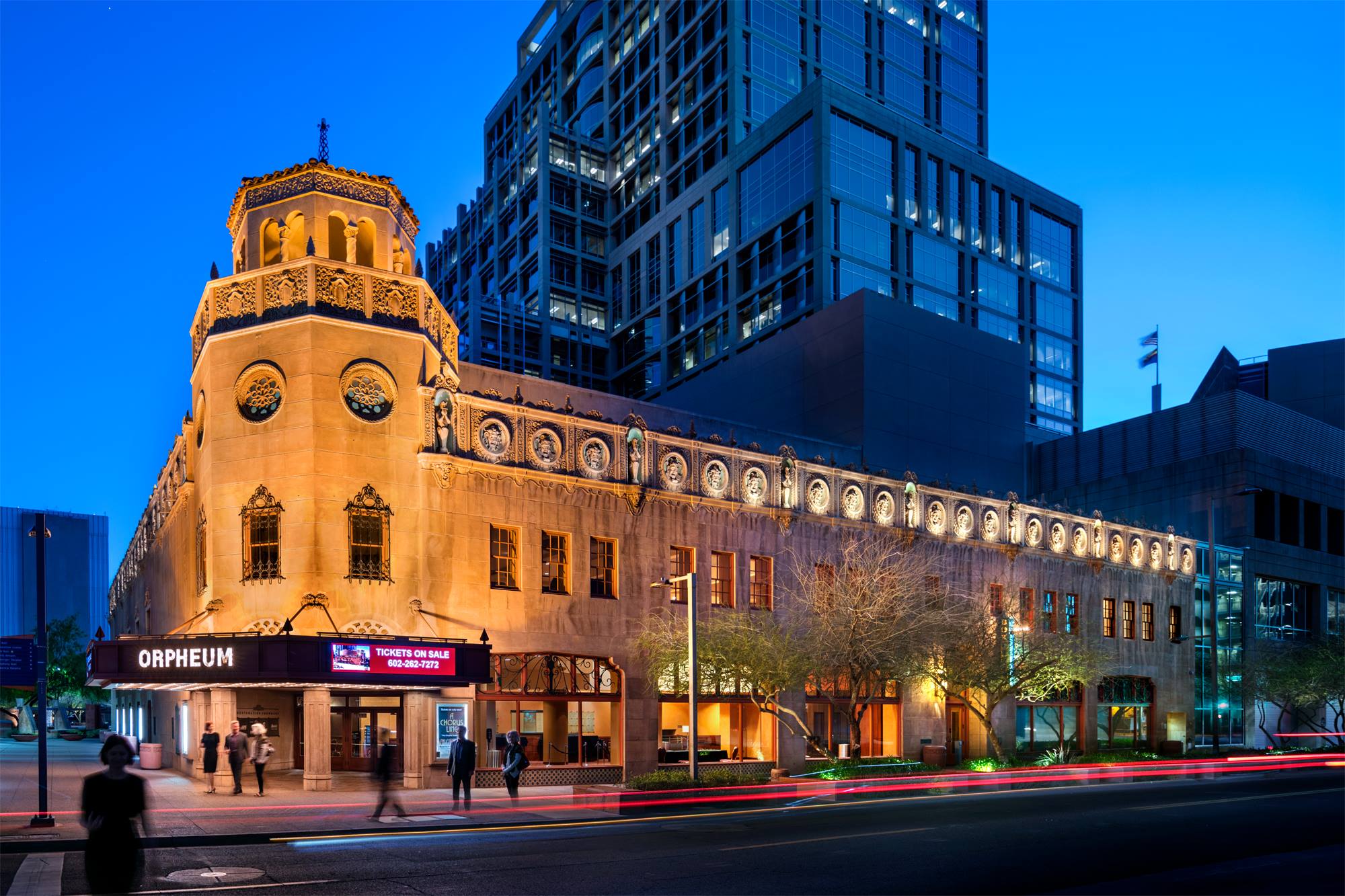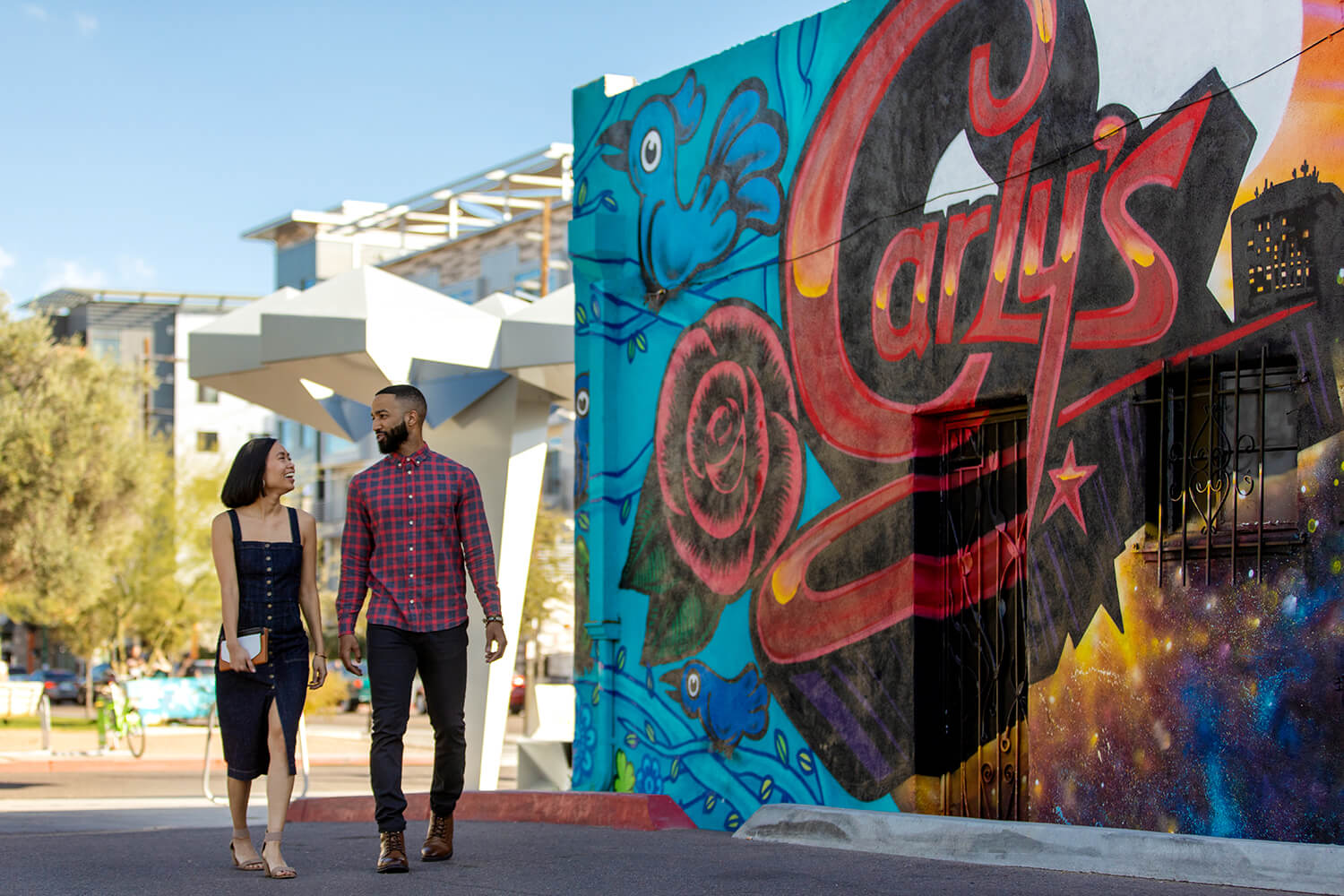As someone who works Downtown and is constantly outside with the public, I often get asked “What is there to do here?”
While this question is often asked by out-of-towners I have been shocked to hear the same from my fellow Phoenicians. I may be biased because I believe that I stay in the loop when it comes to games, trendy restaurants, and the latest place for a cute Instagram picture, but there is so much more to Phoenix than the heat and sunsets.
All the iterations of this question have their own connotations, but I want to focus on a particular one. One that I get asked by people who are a little bit more familiar with the valley than those who are experiencing Downtown for the first time. To understand our present culture, we must look at our past.
A Series of Unfortunate Events
The original townsite for Phoenix was established in 1870 and was then later recognized as a city in 1881. Arizona did not become a state until three decades later in 1912. That might seem like a long time but when you look at other states and well-known cities there’s a big difference.
Our sister state, California was established in 1850 and Los Angeles in 1781. Every single big city in America that you can think of was established before Phoenix. From New York City to San Francisco. Come to think of it, Arizona has only been around for less than half of the United States’ history.
During the time it has been a part of the U.S., it has witnessed a series of unfortunate events that stalled its progress several times. Only five years after Arizona became a state, the U.S. got involved in World War I. This was followed by a post-war boom, then the Great Depression and World War II. The effects of all these series of events are clear if you look at the time certain buildings were built.

The historic Orpheum Theater at night. (Photo: Orpheum Theater)
The Phoenix skyline acts almost as tattoos on the valley, you can see moments in time where certain architecture was in style or if the economy was doing well. Look at the architectural style a little more deeply and you will notice a pattern. Phoenix was making progress into becoming a thriving big city in the ‘20s and we can see that many of our historic buildings were built during this time, like the Orpheum Theater, the Luhr’s Building and Tower along with the Hotel San Carlos. The now-renovated Orpheum Theater has an abundance of memorabilia from the roaring ‘20s.
However, during the Great Depression, not much was built. It wasn’t until the ‘50s that we started to see the skyline continuing to grow. In the ‘70s a lot of the iconic structures we know today were built, like the Renaissance Hotel, Chase Tower, and the Hyatt Regency Hotel. Rinse and repeat. Conflict eventually led to growth, but this cycle left an imprint on Phoenicians.
New Energy, New Traditions
Today, Phoenix is experiencing a new wave of growth, not necessarily driven by conflict but rather by a younger population and a freshly defined vision for the city’s future. Downtown is no longer just an office and government center but is now home to a diverse array of businesses, new traditions, and a rapidly changing skyline.
One of the most exciting examples of this cultural diversity is the Evans Churchill Neighborhood that encompasses the Roosevelt Row Arts District. The District has become a hub of artistic expression and a trailblazer for more modern and diverse culture in Phoenix. It’s named after former President Theodore Roosevelt, who visited the area in 1911 and was impressed by the thriving agricultural and cultural community. Today, Roosevelt Row has become a flourishing arts district, home to a diverse community of artists, musicians, and creatives who are bringing new energy and vitality to the city.
The Roosevelt Row Arts District is a prime example of how Phoenix is embracing its cultural diversity and creating a dynamic and inclusive community. The area is filled with colorful murals, galleries, studios, and independent boutiques, all of which reflect the vibrant and eclectic spirit of the neighborhood. This creative energy can be seen in the many public art installations and street performances that take place in the area, as well as in the countless events and festivals that celebrate the city’s cultural heritage.

The Roosevelt Row Arts District is filled with vibrant murals and public art. (Photo: Jill Richards)
In addition to its thriving arts scene, Roosevelt Row is also home to a diverse and vibrant food scene, with restaurants and food trucks that reflect the cultural diversity of the area. From traditional Mexican and Latin American cuisine to contemporary fusion dishes, the community offers a wide range of delicious options for food lovers. Many of these restaurants are housed in historic buildings that have been restored and revitalized, giving the area a unique and authentic feel that sets it apart from other communities in Phoenix.
Another exciting aspect of Roosevelt Row is the community’s commitment to sustainability and urban renewal. It has been at the forefront of the city’s efforts to create a more sustainable and eco-friendly community, with initiatives like community gardens, green spaces, and sustainable building practices. These efforts not only help to preserve the natural beauty of the area, but also support the community’s long-term health and well-being.
In conclusion, Downtown Phoenix does have a culture, but it is not the same type of culture that Phoenicians experienced growing up. The Roosevelt Row Arts District, is a prime example of how cultural diversity and artistic expression come together to create a thriving and dynamic community. The city’s history has taught us that Phoenix is a place of rebirth and renewal, much like the Phoenix bird that rises from the ashes. The early settlers saw the potential of the rich soil in the desert, and we too will create a Phoenix in our own image.

Daniel Hernandez Rosales. (Photo: Taylor Costello)
Editor’s Note: Daniel joined Downtown Phoenix Inc. (DPI) as a DTPHX Ambassador in 2021 and has since advanced his professional career in Phoenix. During his time at DPI, Daniel displayed a genuine passion for Phoenix and wrote this piece.




